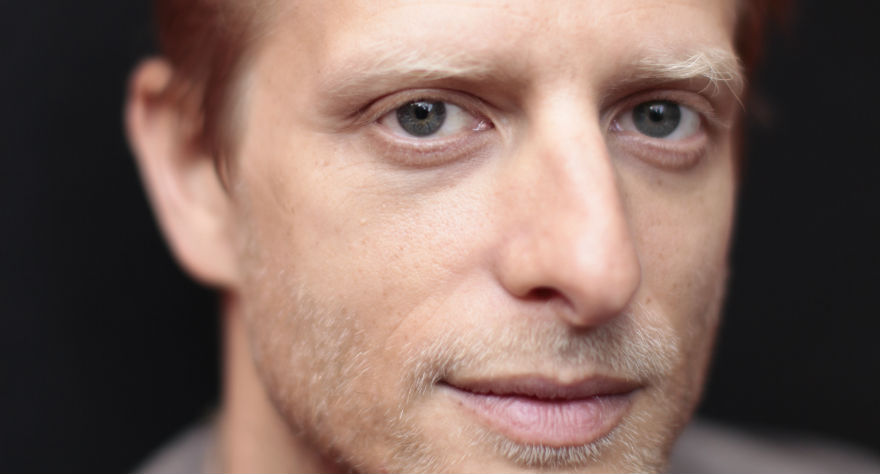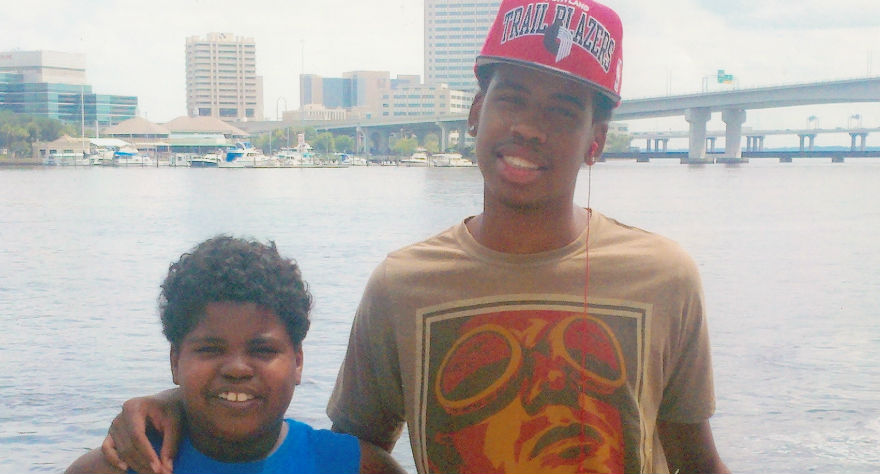Marc Silver Talks ‘3 1/2 Minutes, 10 Bullets,’ Storytelling With Empathy

The complexities and subtleties of race relations in America and, specifically, the U.S. court system, are explored in Marc Silver’s riveting courtroom documentary 3 1/2 Minutes, 10 Bullets, which revolves around the 2012 Florida gas station shooting and murder of black teen Jordan Davis by Michael Dunn, a middle-aged white man. Citing “loud music” as the inciting factor in the crime, Dunn fired ten bullets at Davis and his unarmed friends as they fled the scene.
As a companion piece to our conversation with Jordan’s mother, Lucia McBath, we spoke to Silver about the filmmaking process and how he approached inserting himself into the lives of Jordan’s family and friends. 3 1/2 Minutes, 10 Bullets opens this week in limited release and will air on HBO in the fall.

I interviewed Lucia a couple of months ago. She said of you that…
…I was a bastard. [laughs]
No, not quite! [laughs] She said you were very shy when you two first met.
When you’re walking into someone’s life, particularly when they’re living through a death in the family, you don’t want to go in there like a bull in a china shop. I didn’t want it to seem like I was stealing her story for my own needs. I stepped very sensitively into that space and time they were in, which was weirdly a couple of weeks before the George Zimmerman/Trayvon Martin verdict. It was really inspiring meeting them and learning who they were as parents. They continue to parent children. They became great spokespeople.
She shared so many brilliant ideas with me when we met, and we were only together an hour. You must have had some fascinating conversations with her.
We didn’t really cover a lot of what Lucia became with her activism in the film. We felt like the power of spending time with her was audiences being able to empathize and have feelings for these kind of families who sit behind the news. We hear these stories all the time these days, and I think it’s hard, in a news context, to get underneath the skin of the people involved. We were keen to get as intimate as we could with the feelings Jordan’s parents were going through so that other parents could see what it would feel like if this were to happen to their children.
The murder stemmed from racial tension that was actually very subtle, when you break it down. Mr. Dunn was afraid of the loud music, of the color of the boys’ skin, because it was foreign to his isolated life.
Absolutely. The more we dive into who Michael Dunn is as a character, the more we realize how unaware he was of his own racism. He almost became this metaphor, in film terms, for a part of America that is also unaware of its own racism. The impact of that conditioning led to Jordan being killed, but I think it quietly invites audiences to reflect on their own unconscious biases. There are certain things he says that actually a lot of audience members would agree with. Hopefully they ask themselves, “Why do I fear blackness? How have I been conditioned to have that sense of fear?”
The film instills empathy, which is the most important thing. Mr. Dunn clearly had no empathy.
You know what? His family has never apologized or even commented on Jordan’s death. My hope is that the film is seductive in the way it invites you to consider issues that are hugely complex and subtle, like you said.
Someone tries sushi for the first time, and they hate it. They say, “I’m never going to try it again. I hate all sushi.” Elsewhere, a white person says, “I had a bad experience with a black person, so they’re all bad.” One is clearly more extreme than the other, but I think both of these dismissive, blanket statements actually come from the same place. It’s a matter of fearing the unfamiliar.
Absolutely. It basically boils down to this fear of the “other.” You have to question where that comes from. There are people who say that that’s what white supremacy has done, that the history of the U.S. is built on this fear of and destruction of the “other.” I think, in many ways, that’s what Michael Dunn, the shooter, came to represent. He was almost unable to handle these young black men who were talking back to him. He was angry that he was being spoken back to by these people he deemed to be inferior.
I spoke to David Oyelowo a while back about playing Martin Luther King Jr. in Selma. He said he was a good fit for the role because he’s a Brit, and can therefore approach the material objectively. Would the same apply to you?
I’ve thought about that a lot. I wondered whether me being British was positive or negative or whether it would impact the way I told the story. In many ways I feel it gives me the luxury of having this bird’s eye view and see these invisible, systemic links in this country. On the other hand, I think this story has very universal themes of justice and parenting and race and power and inequality. Those issues are universal.
What was your approach to the story cinematically?
Funnily enough, I’d done a film previous to this which was shot in Honduras, Mexico, Arizona—every frame was gorgeous and there were these big, dramatic vistas. I got to Jacksonville for this movie, and it was winter. It felt very cold and grey. I was worried that there might be nothing to film there. I was stuck in a courtroom with no windows. Walking around Jacksonville, I realized that no one walks in Jacksonville. You go around in your car, go home to your gated community, receive information not from other people, but from the media. And you go to shopping malls. There didn’t seem to be a place where people cross paths with each other. That became a cinematic motif throughout the film. That’s what gave us the idea to film lots of freeways and traffic and listen to radio phone-ins.
That’s how we dealt with life outside the courtroom. Inside the courtroom was very fixed and limited. We were feeding mainstream media a live feed, so we couldn’t show any of the jurors. It was very restrictive. I think that led to the close-up photography. Tiny details on people’s faces became hugely revealing. People were thinking about things much deeper than what could actually be revealed in the courtroom.
You expect Jordan’s parents to leap out of their seats several times, but they just sit still. It’s chilling.
I really felt for them. They were told not to show emotion in the courtroom because it would affect the jury. Every day, the judge had to ask Michael Dunn if he was satisfied with the way the day had gone and how he was represented. You can see the frustration on Jordan’s parents’ faces. At the time, it felt like the rights of Michael Dunn were more important than the rights of Jordan, who wasn’t allowed to be referred to as “the victim.” Race wasn’t allowed to be discussed either. The defense attorney said, because Michael Dunn hadn’t been charged with a hate crime because he wasn’t heard using racist language at the time of the shooting. So race couldn’t be mentioned. Then, you step outside, and everyone’s talking about race on the streets and on the airwaves.
It’s a great time right now for documentaries, but it’s also harder than ever to stand out from the crowd and be unique. There are so many fundamental documentary tools that are now considered cliché. Going into the film, was there anything you were determined not to do?
I didn’t want to have any talking heads, and I didn’t want to have so-called “experts” who weren’t connected to the story. I had this unwritten law that we were only going to speak to people who were directly involved in the case. I guess I cut the film in the way you would cut a fiction film. There are people out there who make great talking-head films, but I prefer telling stories in a way that’s less about data, more about empathy. Ultimately, you can get data on Google. To get a sense of understanding you watch film.
Was there any footage that was painful to leave out?
Lots. I spent my first Thanksgiving with Ron’s family, which was obviously the anniversary of Jordan’s death. There’s a beautiful scene where they pray and toast Jordan. Also, there’s an amazing scene with Ron, who used to play baseball. He and Jordan used to practice and play catch together, but now he catches baseballs thrown by a machine. We talked to him about Jordan as he played with the machine. In Jordan’s absence, you got to learn a lot about who he was.
Talk to me about when you were in the process of shuffling your footage around and organizing the film’s structure. What was the most difficult thing about that?
I think there were two main things. One was the sheer amount of data there was when it came to the trial itself. I was on one camera and we had two remote-controlled cameras. There was a lot of material. Cutting a trial to make it interesting is hard, because they take a lot of time to unfold. Another thing was representing the grief Lucia and Ron were suffering. I think there’s a fine line between exploiting that and manipulating an audience and at the same time observing it. It was also difficult to represent Jordan without ever having met him. He’s the star of the film, and yet he’s the only one who’s not with us. We had some VHS material and some cell phone clips and family photos, but we didn’t want to use those things in an exploitative way. You get to learn who he is through his friends and girlfriend and parents. You get to know him better through them than through us showing pictures of him.
